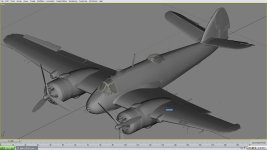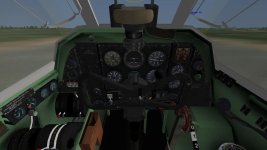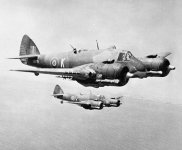-
There seems to be an uptick in Political comments in recent months. Those of us who are long time members of the site know that Political and Religious content has been banned for years. Nothing has changed. Please leave all political and religious comments out of the forums.
If you recently joined the forums you were not presented with this restriction in the terms of service. This was due to a conversion error when we went from vBulletin to Xenforo. We have updated our terms of service to reflect these corrections.
Please note any post refering to a politician will be considered political even if it is intended to be humor. Our experience is these topics have a way of dividing the forums and causing deep resentment among members. It is a poison to the community. We appreciate compliance with the rules.
The Staff of SOH
You are using an out of date browser. It may not display this or other websites correctly.
You should upgrade or use an alternative browser.
You should upgrade or use an alternative browser.
Many Thanks - a Beaufighter
- Thread starter NachtPiloten
- Start date
sixstrings5859
Charter Member
Nice model. Thank you for another night fighter . Always welcome. At some time in the future maybe a Mosquito night fighter would also be nice. I know this one ought be good as your past work. Thank you.
Led Zeppelin
Charter Member
oh oh!! 

Frosty
SOH-CM-2025
That looks very promising!! Hopefully it has a more immersive cockpit than the one we have now (no offense to the creator of the current model intended ).
So that's a lot of high quality aircraft in the pipeline, isn't it? A P-61, a Beau, a Typhoon
 . Where do you find the time?
. Where do you find the time?
So that's a lot of high quality aircraft in the pipeline, isn't it? A P-61, a Beau, a Typhoon

 . Where do you find the time?
. Where do you find the time?really - we have one already
http://www.sim-outhouse.com/sohforums/local_links.php?action=jump&catid=80&id=16593
see the two on that page
Nice model. Thank you for another night fighter . Always welcome. At some time in the future maybe a Mosquito night fighter would also be nice. I know this one ought be good as your past work. Thank you.
http://www.sim-outhouse.com/sohforums/local_links.php?action=jump&catid=80&id=16593
see the two on that page
That looks very promising!! Hopefully it has a more immersive cockpit than the one we have now (no offense to the creator of the current model intended ).
So that's a lot of high quality aircraft in the pipeline, isn't it? A P-61, a Beau, a Typhoon. Where do you find the time?
Sent the p61 to John last week to be packaged up
sixstrings5859
Charter Member
Thank you Sir for the link plus i forgot the mosquito night fighters in my ETO install . Been over at the dark side playing my newly done Il-2 VP modpack. Over 500 aircraft to sort through....but CFS3 does things Il-2 can't and vice-versa . To have both is bliss to us WWII aircraft fans. A super looking aircraft. Thank you. Can't wait for the new P-61.
Pat Pattle
SOH-CM-2025
Excellent! Dave's a very talented modeler, as are you Ted, this will be good. :0)
mongoose
SOH-CM-2025
Reading
"White, Graham. Night Fighter over Germany: Flying Beaufighters and Mosquitoes in World War 2" and some initial comments he made
Quote
"
Altogether 337 Mark IIs were built with the Rolls-Royce engines, and no fewer than 102 of them – thirty per cent – crashed from one cause or another. These included just two shot down by enemy action and – as if they didn’t have enough to contend with – one destroyed by a USA Spitfire. The Merlin engines gave the aircraft such a built-in swing to port that it tried to take off in ever decreasing circles. You had to open up the port engine slowly and carefully halfway before attempting to advance the starboard throttle, yet the heavy aircraft was underpowered, and if you didn’t accelerate reasonably quickly you risked not getting off at all. And if you messed up the landing, going round for another try became a desperate juggle with Jesus."
"
At this point, with the impeccable logic of the Mahogany Bomber pilots in Air Ministry, it was decided to take the Beaufighter IIs off the front-line squadrons, and put them onto training stations. Presumably they reasoned that any trainee pilot managing to stay alive on such aircraft for more than five minutes would find operations over Germany a doddle. Eighty-four Mark II aircraft were sent to Charterhall. Thirty-nine of them (that is forty-six per cent) crashed, eighteen of them during take-off, landing, or overshooting. Four force-landed, six plunged into the sea, five into the ground, and four caught fire in the air. Two of them simply disappeared off the face of the earth, and it was one of these that came close to finishing up as a coffin for Dagwood and me."
"
At Winfield, we went on to the newer Beaufighter Mark VI, a vastly different machine with more powerful engines. True, on one flight the port engine packed up, covering the windscreen with oil, but unlike the Merlins, on the remaining engine we sailed confidently back home with little trouble. It carried a newer type of radar, the Mark VIII, which only had a single circular screen instead of two rectangular ones. You were the dot in the centre of the circle and other aircraft appeared as a curved arc of light. The distance from the centre to the arc gave the range of the other plane. The completeness of the arc and the position of the gap in the circle indicated whether it was above or below, and to the left or to the right of you. It was rather like looking at a streetlight through the end of an empty beer bottle, which, I suppose, could be why we got on with it so well. In fact the Beaufighter Mark VI was very much a pilot’s aircraft, robust and powerful (at least low down, it wasn’t too good at height), with a panoramic view from the cockpit, giving the pilot the impression that he was flying a cinema organ. Not so good for the poor navigator, though, particularly when trying to navigate, operate the radar, and load the ammunition all at the same time, in the draughty tunnel of a fuselage"
White, Graham. Night Fighter over Germany: Flying Beaufighters and Mosquitoes in World War 2 (Kindle Locations 1619-1629). Pen and Sword. Kindle Edition.
"White, Graham. Night Fighter over Germany: Flying Beaufighters and Mosquitoes in World War 2" and some initial comments he made
Quote
"
Altogether 337 Mark IIs were built with the Rolls-Royce engines, and no fewer than 102 of them – thirty per cent – crashed from one cause or another. These included just two shot down by enemy action and – as if they didn’t have enough to contend with – one destroyed by a USA Spitfire. The Merlin engines gave the aircraft such a built-in swing to port that it tried to take off in ever decreasing circles. You had to open up the port engine slowly and carefully halfway before attempting to advance the starboard throttle, yet the heavy aircraft was underpowered, and if you didn’t accelerate reasonably quickly you risked not getting off at all. And if you messed up the landing, going round for another try became a desperate juggle with Jesus."
"
At this point, with the impeccable logic of the Mahogany Bomber pilots in Air Ministry, it was decided to take the Beaufighter IIs off the front-line squadrons, and put them onto training stations. Presumably they reasoned that any trainee pilot managing to stay alive on such aircraft for more than five minutes would find operations over Germany a doddle. Eighty-four Mark II aircraft were sent to Charterhall. Thirty-nine of them (that is forty-six per cent) crashed, eighteen of them during take-off, landing, or overshooting. Four force-landed, six plunged into the sea, five into the ground, and four caught fire in the air. Two of them simply disappeared off the face of the earth, and it was one of these that came close to finishing up as a coffin for Dagwood and me."
"
At Winfield, we went on to the newer Beaufighter Mark VI, a vastly different machine with more powerful engines. True, on one flight the port engine packed up, covering the windscreen with oil, but unlike the Merlins, on the remaining engine we sailed confidently back home with little trouble. It carried a newer type of radar, the Mark VIII, which only had a single circular screen instead of two rectangular ones. You were the dot in the centre of the circle and other aircraft appeared as a curved arc of light. The distance from the centre to the arc gave the range of the other plane. The completeness of the arc and the position of the gap in the circle indicated whether it was above or below, and to the left or to the right of you. It was rather like looking at a streetlight through the end of an empty beer bottle, which, I suppose, could be why we got on with it so well. In fact the Beaufighter Mark VI was very much a pilot’s aircraft, robust and powerful (at least low down, it wasn’t too good at height), with a panoramic view from the cockpit, giving the pilot the impression that he was flying a cinema organ. Not so good for the poor navigator, though, particularly when trying to navigate, operate the radar, and load the ammunition all at the same time, in the draughty tunnel of a fuselage"
White, Graham. Night Fighter over Germany: Flying Beaufighters and Mosquitoes in World War 2 (Kindle Locations 1619-1629). Pen and Sword. Kindle Edition.
sixstrings5859
Charter Member
Thanks for sharing that. Interesting facts that i didn't know about. Thanks again.
gecko
Charter Member
Looking good Ted.
By the way, do you have the Pilot's Notes from the Air Ministry for the different variants? They are a great resource for determining how different controls and other features are supposed to work on the different models. I have them for Mk.I, II, VI, X, XI and 21.
By the way, do you have the Pilot's Notes from the Air Ministry for the different variants? They are a great resource for determining how different controls and other features are supposed to work on the different models. I have them for Mk.I, II, VI, X, XI and 21.
Just a reminder
I am ONLY making night fighters no other variants.
I am ONLY making night fighters no other variants.
popsaka
re-member,remem-ma-member
http://www.sim-outhouse.com/sohforums/local_links.php?action=jump&catid=80&id=16593
see the two on that page
Yes, these are gorgeous
 and unsung and except for that hideous co-pilot, could/should be the basis for a whole new series of Mossies... IMHO
and unsung and except for that hideous co-pilot, could/should be the basis for a whole new series of Mossies... IMHO 
Also, getting back to Beau's, the Mark VIC's w/ defensive gunner, rails for rockets, non-dihedral tails, all ten guns and direction finder ant/loop....



 Will be great!
Will be great!
